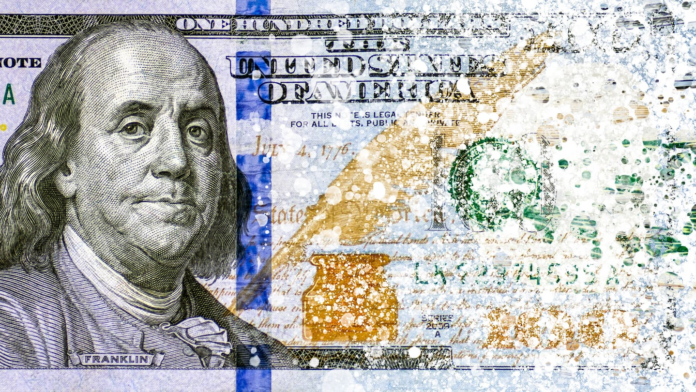Within two months, 825,000 initial jobless claims were filed — nearly triple the number for all of the previous year. That April, unemployment hit a post-Great Depression record of 16.9 percent.
It was mid-March 2020 when then-Governor Charlie Baker shut down schools and nonessential businesses as a deadly new coronavirus threatened the state.
This column is from Trendlines, my business newsletter that covers the forces shaping the economy in Boston and beyond. If you’d like to receive it via email on Mondays and Thursdays, sign up here .
Many COVID layoffs were temporary, but they dealt a lasting financial blow to private employers, who bankroll jobless benefits through taxes and are still paying back the state for more than $2 billion in jobless benefits they couldn’t make good on when their claims account ran out of money in 2020.
Advertisement
Now, more than four-and-a-half years later, businesses are bracing for another big hit. During the avalanche of pandemic claims, Charlie Baker’s administration misdirected $2.5 billion in federal funds for jobless benefits that should have been paid by employers.
Get Starting Point A guide through the most important stories of the morning, delivered Monday, Wednesday, and Friday. Enter Email Sign Up
Last Thursday I reported that Governor Maura Healey probably won’t succeed in persuading the US Labor Department to waive repayment of the misspent funds. That would set up a high-stakes showdown over whether employers or the state, using taxpayers’ dollars, should reimburse the federal government.
The case against taxpayer support
1. Employers are responsible for the unemployment insurance (UI) trust fund that pays for jobless benefits. They support the fund with quarterly tax payments. Rates are based in part on each employer’s history of contributions and claims. Employers have, on several occasions over the past two decades, persuaded legislators to delay tax increases intended to put the fund on sounder financial footing.
2. The unemployment checks in question were funded with money allocated by Congress during the pandemic for special federal programs, including payments to independent contractors and gig workers who weren’t eligible for state benefits. The Healey administration, which uncovered the error last year, says the money was used for state benefits and should have come from the trust fund.
3. Beacon Hill previously rejected business groups when they urged the state to pick up the costs of pandemic-related jobless benefits.
Advertisement
In 2022, two years after the trust fund was drained, the state sold $2.7 billion in bonds to repay loans taken from the US Treasury and bolster the UI account balance. It required employers to pay principal and interest over time through a special assessment that could reach $3 billion.
In an email, one reader summed up the argument against using taxpayer money to help employers: “You owe the money. Pay up. Why is that such a difficult concept?”
The case for taxpayer support
1. Business leaders believe that because shutdowns were mandated by the state, it should resolve the accounting blunder that went undetected for several years.
2. They also point out that Massachusetts received $5.3 billion in pandemic relief from the federal American Rescue Plan Act, but used just $500 million to replenish the UI trust fund.
3. The state is sitting on a “rainy day fund” of $9.1 billion.
“It’s raining,” said Jon Hurst, president of the Retailers Association of Massachusetts. “Even without factoring in the cost of this $2.5 billion error, and without falling into a recession, our UI system is already on track to double employer payroll taxes over the next couple of years.”
A two-step solution
There are merits to both arguments. I see at least three solid reasons why the state should pay back the feds — but only if it also overhauls the UI system to fix its structural flaws.
1. Skyrocketing unemployment costs at the start of the pandemic were the result of decisions by the Baker administration to protect the public.
“It was the right thing to do. But the financial costs were high, and placing the burden for repaying them on employers doesn’t reflect the spirit of shared sacrifice that the pandemic demanded of all of us,” a Globe editorial concluded last year.
Advertisement
2. If the state had identified its mistake sooner, there would have been more ARPA money — intended to help states recover from the shock of the pandemic — to bail out the UI trust fund.
3. Multiple administrations have failed to address underlying weaknesses in the UI system, putting Massachusetts at a competitive disadvantage to other states.
These include generous benefits that are unsustainable even as Massachusetts employers pay some of the highest unemployment taxes in the country; lax benefit-eligibility requirements; and a low cap — $15,000 per worker — that is used in the calculation of employer contributions. A higher cap would provide more money to the system.
“It’s very hard to make UI a top spending priority,” said Evan Horowitz, executive director of the nonpartisan Center for State Policy Analysis at Tufts University. “But legislators need to make hard decisions” such as increasing assessments, cutting benefits, and perhaps requiring workers to pay into the system, he said.
If the state sticks employers with the $2.5 billion bill but doesn’t fix the UI system, it will be compounding the screw-up that got us here in the first place.
Larry Edelman can be reached at larry.edelman@globe.com.
Who’s paying for Massachusetts’ $2.5 billion pandemic unemployment error?
RELATED ARTICLES


